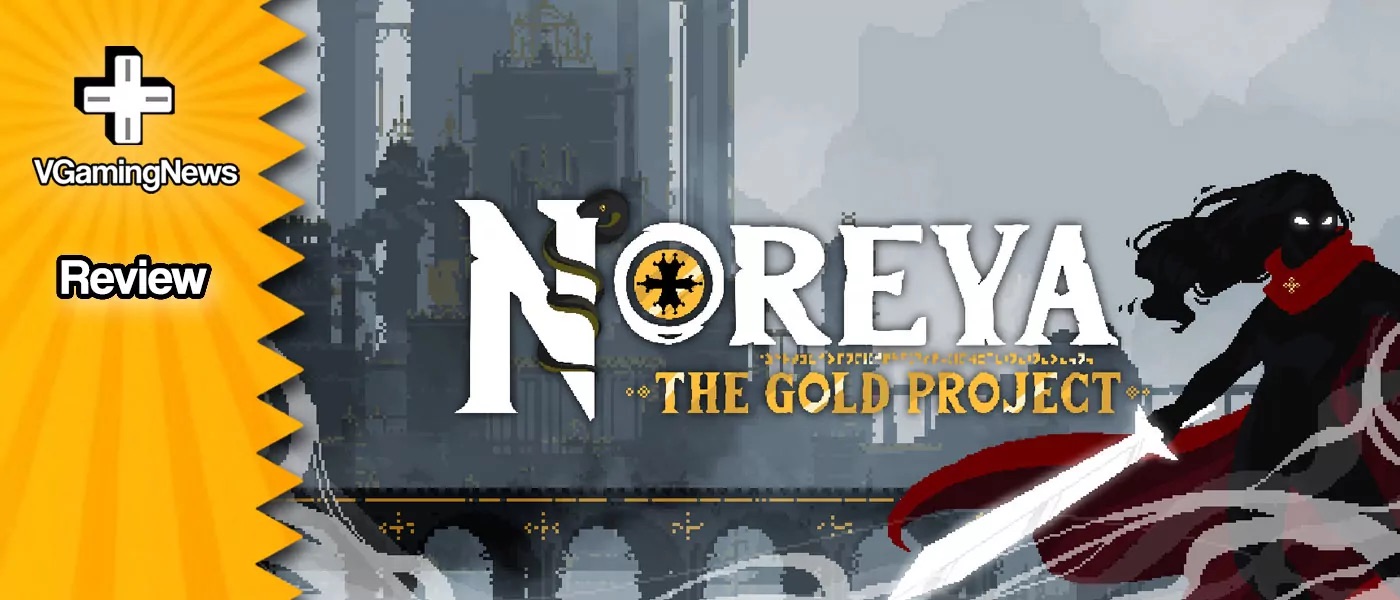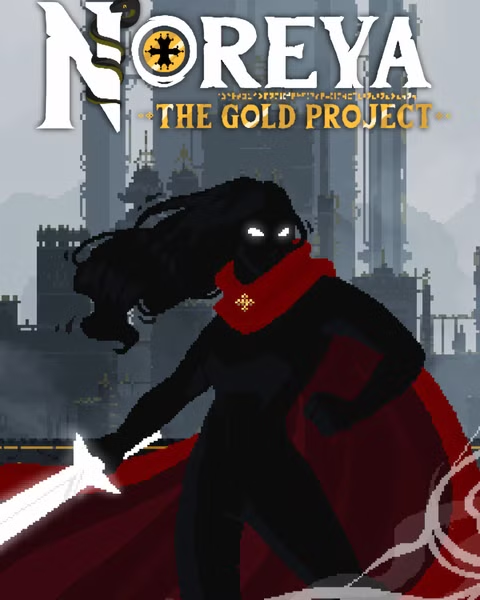When it comes to gaming, I’m one of those players who will take every side path before finally returning to take on the main quest, and perhaps that curious mind is what makes me enjoy Metroivanias so much. I love exploring their sprawling maps, puzzling about how to get around before finally returning with all of my traversal skills, dashing and leaping between ledges and traps as if they weren’t there. It was with great enthusiasm then that I picked up Noreya: The Gold Project, from Toulouse-based indie developers, Dreamirl, who launched their debut title in the genre in June 2024.
The game begins with an animated cutscene showing a group of adventurers, merrily enjoying each other’s company around a campfire. Seconds later they are beset by creatures of darkness and are all slain, except for one – Kali, who becomes our protagonist. Instead of succumbing to evil and becoming a zombie like her friends, Kali instead becomes a kind of hybrid shadow-being, still part human but now under the influence of some dark power. We soon learn that this is the fault of the God of Gold, Auria, whose offerings of riches have corrupted the entire kingdom, turning almost every living creature into a mindless puppet, who can only seek more gold and more power. In direct conflict with Auria is Hemenis, the Goddess of Light, and it’s between these two self-serving deities that Kali finds herself torn.
As Kali, you traverse the vast world of Noreya, slaying monsters, collecting gold, and overcoming traps and puzzles. At a glance, the map might rival the scale of Hallownest, from Team Cherry’s genre redefining Hollow Knight, but whilst not being quite that big, the size of the world is certainly impressive. There are six unique biomes to explore, and each one is presented with attractive pixel art visuals and accompanying theme music that really showcase a mysterious and sinister world. Kali is depicted as a rather tiny sprite and many environmental elements are huge by comparison, offering a grand sense of scale for the world. I particularly loved the depiction and music in the opening area, Valsanre Forest, which is portrayed in autumnal golds and browns, and scored with a beautiful soaring theme song of synth-strings. This is a place that truly feels ancient, burgeoning with otherworldly mysteries and secrets.
The platforming and puzzling in Noreya are well designed without being especially groundbreaking, and has a stable middle of the road difficulty, which I appreciated. Getting around the map is great, as the controls are wonderfully responsive and Kali has a tremendous level of agility, making both exploration and combat a breeze. Speaking of combat, the battling in Noreya is pretty simple; you have a simple sword combo and a few unlockable special attacks, but no real dodge or parry skills to master, making this something of a spam-attack/brute force affair. Also bolstering the ease of combat is the rather ropey enemy AI, which often has baddies getting stuck on bits of terrain and simply waiting for Kali to put them out of their gold-plated misery. (I even killed two key bosses thanks to these hiccups, which is pretty disappointing.)
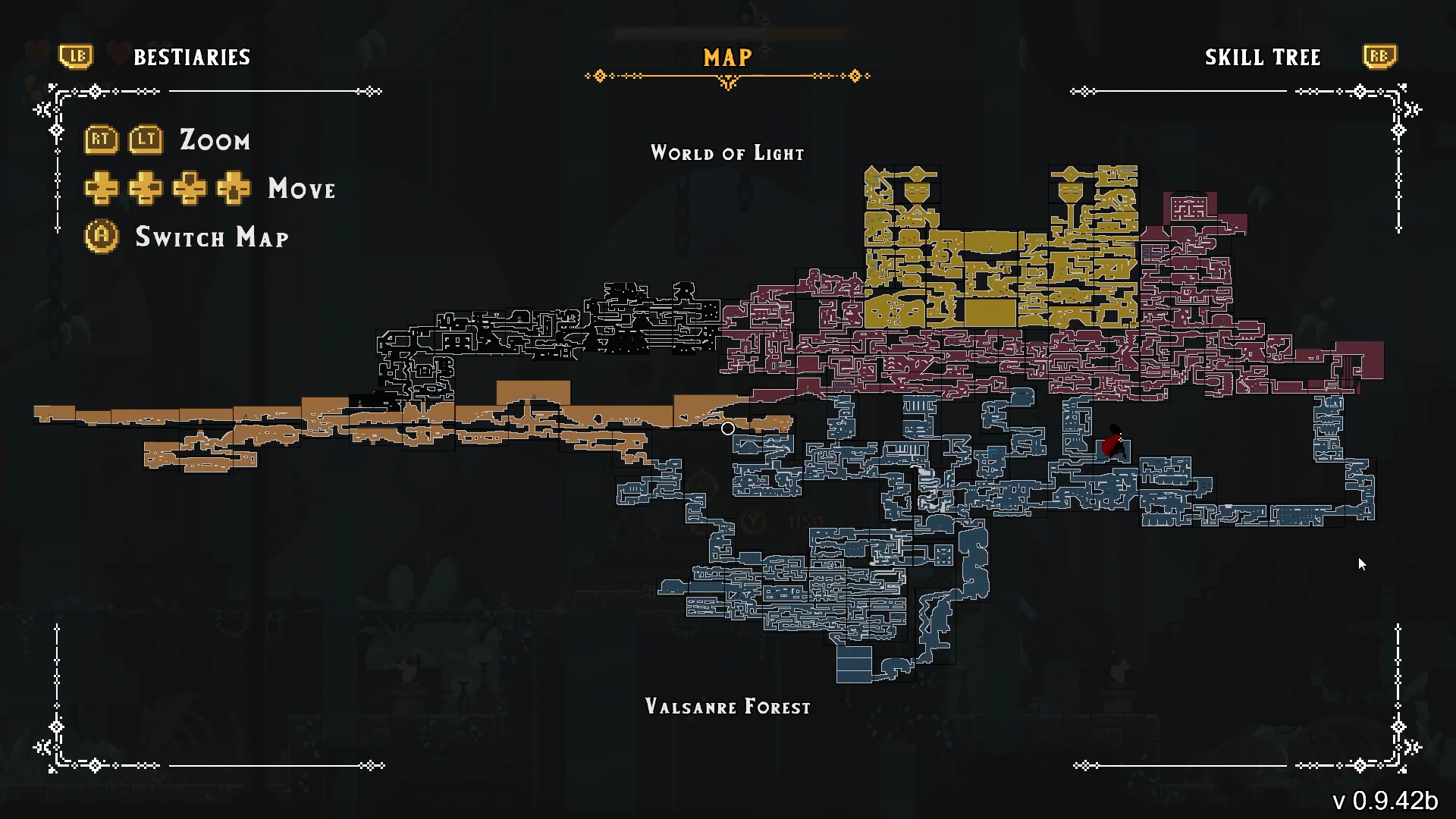
Noreya markets itself as offering each player an entirely unique experience, and while I certainly wouldn’t go that far, you are left to your own devices very early on. You’re quickly given the rough locations of the five guardian bosses you must overcome before facing the final boss, but you are free to explore the world entirely as you wish. While this level of freedom may enthuse some players, I found the openness something of a double-edged sword. Unlike most Metroidvania games, core traversal skills aren’t unlocked by defeating the key bosses in the game, but from sub-bosses who lurk in entirely random parts of the map. Your ability to fully explore the world is completely tethered to whether you’re lucky enough to stumble upon these abilities early on, or whether you finally find them after a lot of frustrating searching (like I did, some three hours later). I’d definitely have appreciated at least a little signposting towards these abilities, streamlining the significant amount of backtracking through one-way areas and cul-de-sacs, of which there are way too many.
The story, like the exploration, is almost entirely open, and I think it also suffers a little as a result. The tale of Noreya unfolds as you find statues, known as Steles, hidden throughout the world, and they read like diary entries from an ancient king, Aleph, who rails against the gods. There are more than 100 statues to find, and they offer veiled glimpses into the mission of Aleph and his motives, asking you to discern the specifics the more of them you discover. Now, I’m a big fan of fractured storytelling, but the plot in Noreya is entirely splintered. Once you uncover enough information, the story becomes an interesting one, but I wonder if some additional cutscenes or thoughts from Kali might have offered a little more engagement with the plot.
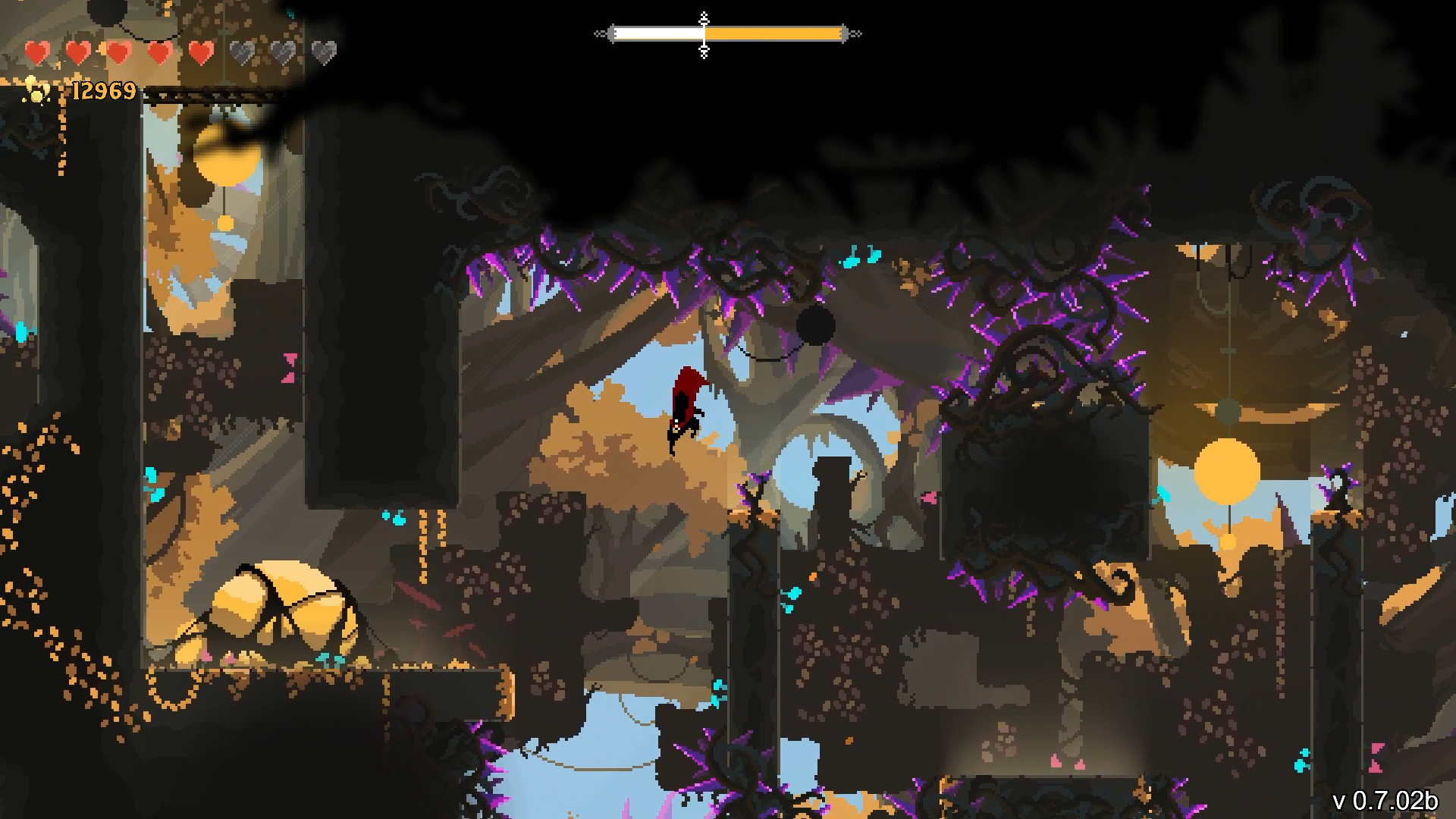
Also dotted throughout the kingdom of Noreya are huge plinths designed to hold statues to either of the gods, Auria or Hemenis, depending on your preferred allegiance. Practically, these statues offer you the opportunity to access and upgrade your skill tree and act as much needed fast travel points. With each statue you place, your devotion to that god grows, and with that so does their power. The strength of each god is tangible in game, as it directly impacts the world map: when Auria is dominant, Kali finds herself in the World of Gold, and conversely, when Hemenis is in ascendance, you travel through the World of Light.
While this may sound very impressive, I was a little underwhelmed with how this excellent idea was actually implemented, as there’s realistically very little difference between the two worlds. Yes, a handful of map screens change as your allegiance shifts, but that aside, there is nothing tangible to differentiate the worlds of Gold and Light, which is something of a shame. The idea of gods vying for control over the universe is an epic one, and it would have been nice to feel more of their influence on the world as they each take control. Perhaps offering up some different enemies or music would have been incredibly impactful changes, or at the very least, some minorly adjusted colour palettes to indicate which deity is in power. At the moment things feel like a bit of a half-measure.
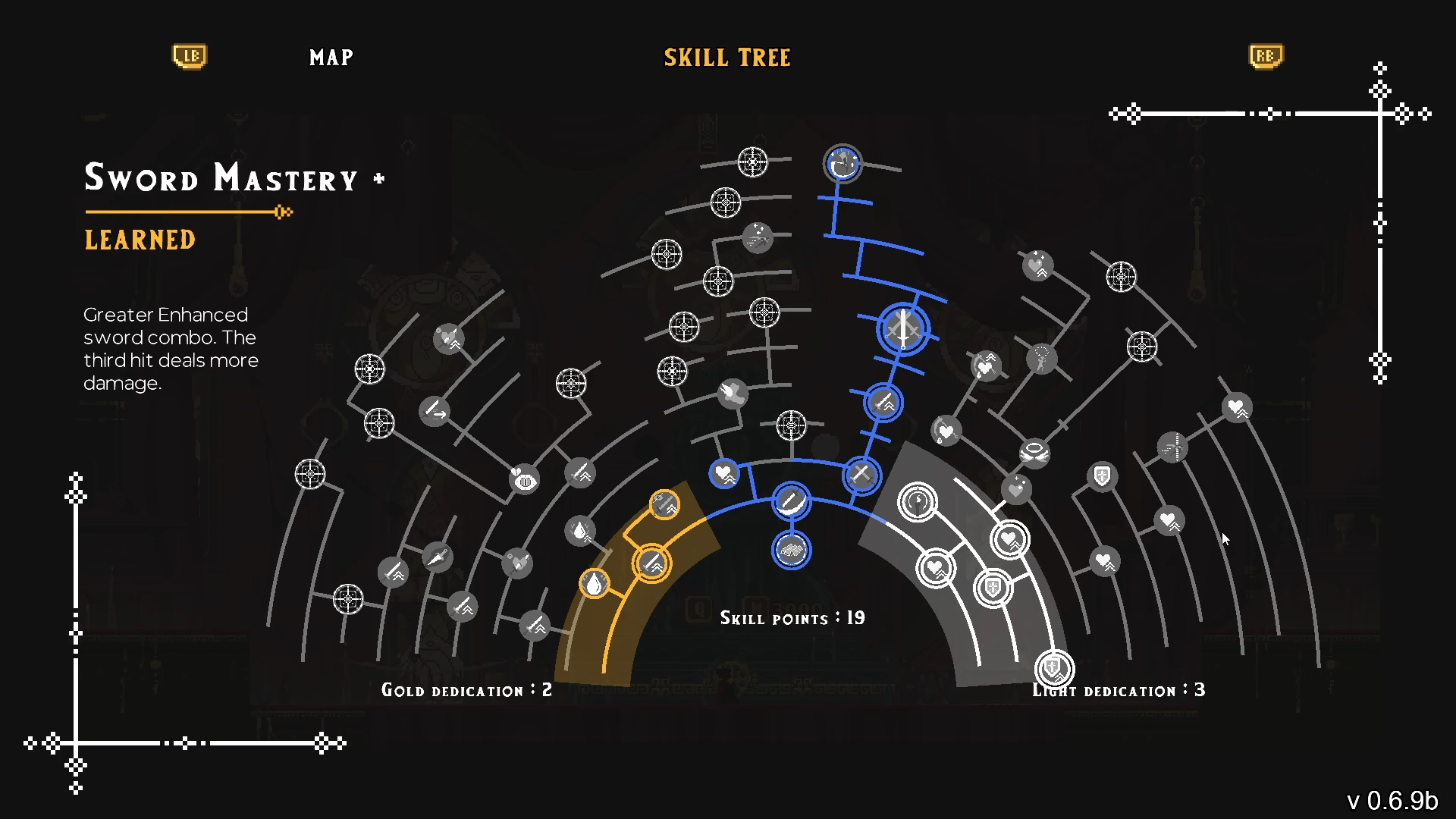
The warring of the two gods also has a direct impact on your progression as Kali, and thankfully, this is implemented much more impressively. The skill tree is split into three sections, with one dedicated to Gold, one to Light, and a Neutral section in between them. You can always access the skills in the Neutral section so long as you have enough Skill Points available, which you earn by offering gold at the deity statues. To gain access to the Gold or Light skills however, you are required to have a certain level of devotion to the corresponding god as a prerequisite. I really liked the idea of having to pledge your allegiance to one of the gods in order to access their most impressive abilities, as it not only encourages you to pick a side in their war (kind of), but also requires you to fully explore the map in order to find all of the available plinths and set down your statues.
That said, not everything runs smoothly with the skill progression, as the devotion system isn’t very well explained to you as a player. I can live with a little bit of early confusion about how the system works, but I was pretty annoyed that I managed to waste a good number of Skill Points by unknowingly shooting myself in the foot. You see, the dedication of the statues aren’t permanently set, and you’re actually able to change them between Auria and Hemenis as you wish (likely so that you can swap between worlds and access some new areas). This then changes your devotion level, which can wipe out any high level skills you’ve unlocked from one side of the skill tree without offering you so much as a warning beforehand. It may sound picky, but this is the kind of quality of life feature that should really go without saying.
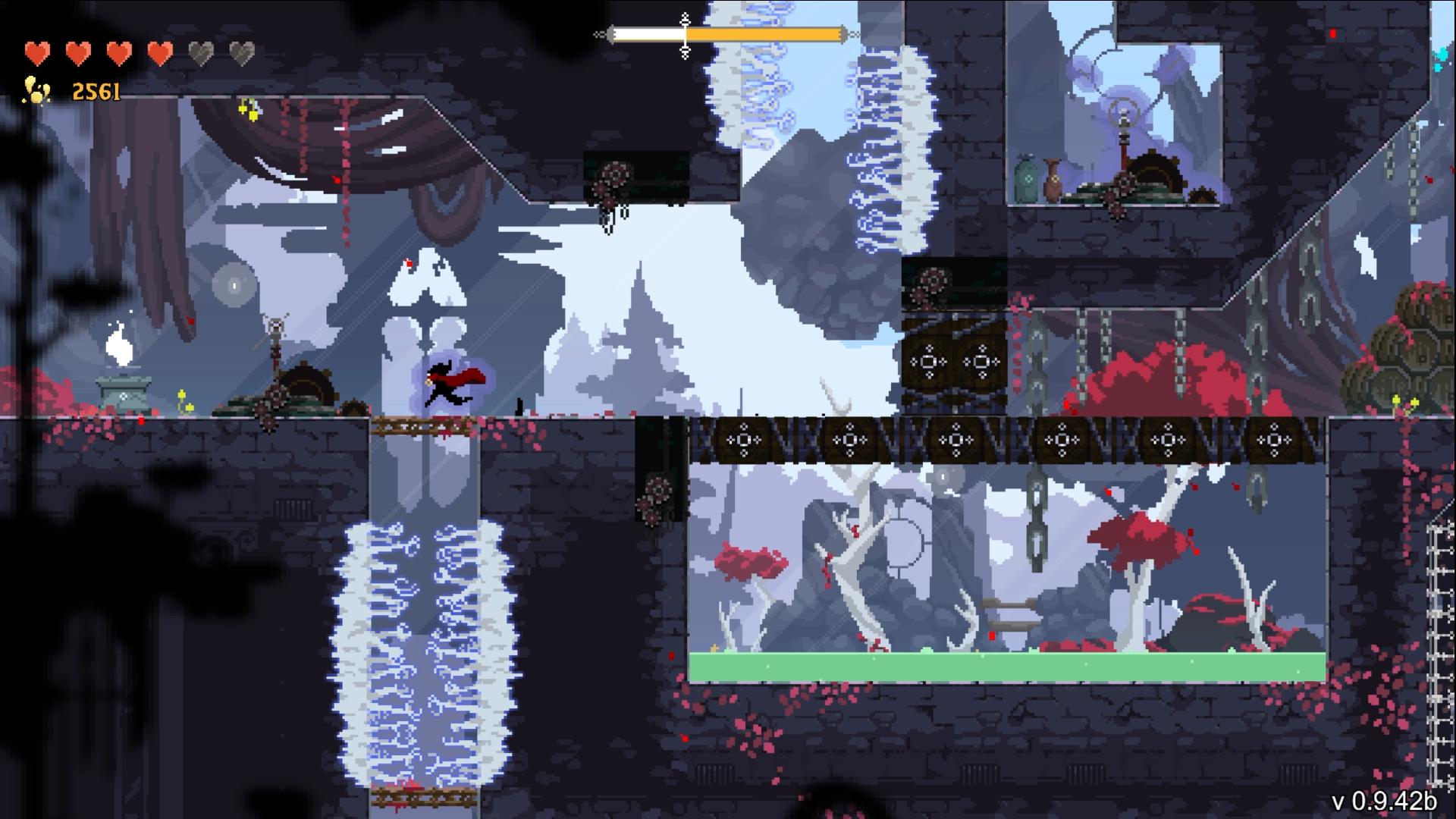
Unfortunately, this lack of attention to detail feels like a common theme in Noreya, and it tarnishes the glitter of a game that has a decent amount going for it. Whilst there’s nothing game-breaking, there’s a laundry list of niggly annoyances that eventually add up to a less than top-tier experience, leaving you with a final product that feels a little rushed. Whether it’s the semi-regular framerate drops, attack effects that don’t always act as expected, or the general lack of sound effects to accompany meaningful actions (like special attacks and teleportation, for example), I feel like Noreya: The Gold Project would benefit from a good few hours of spit and polish to help it live up to its shining title.
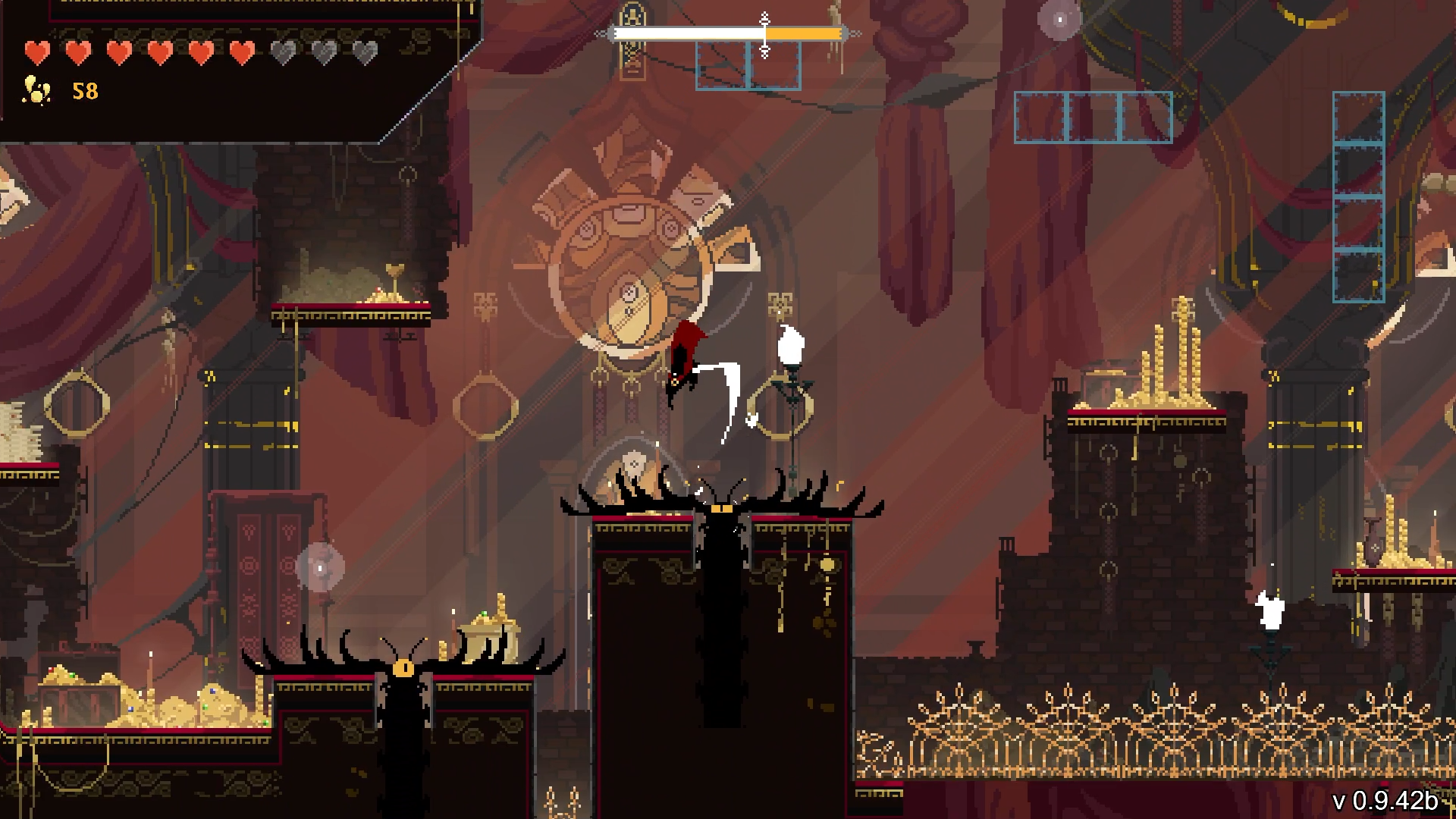
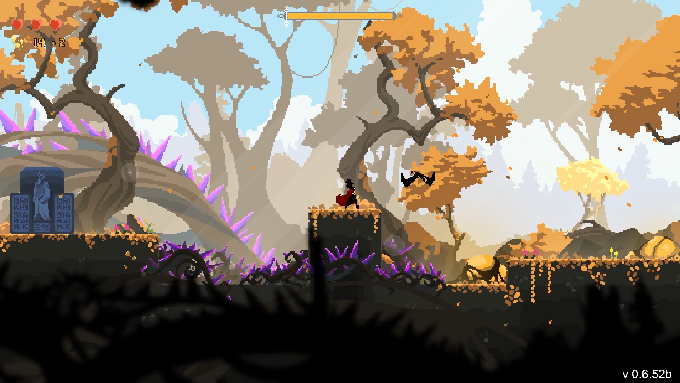
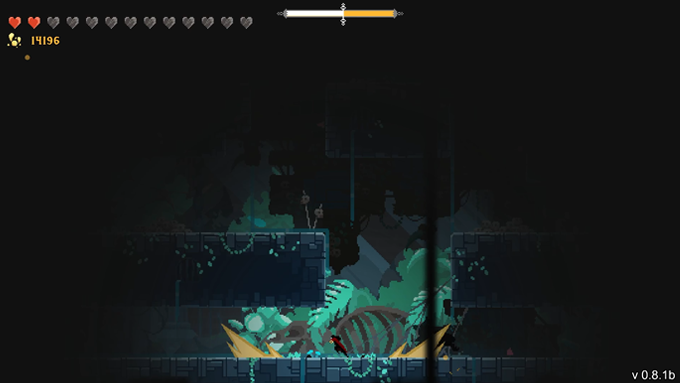
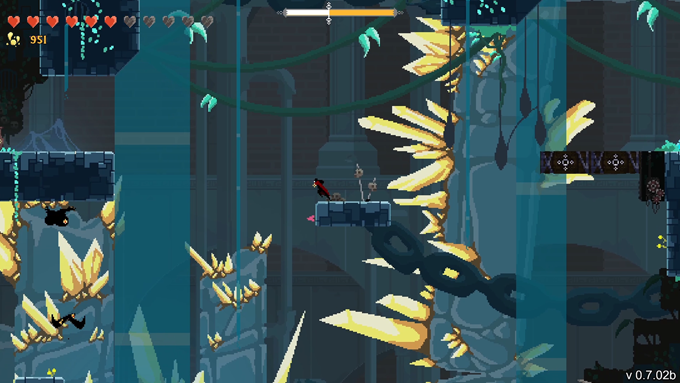
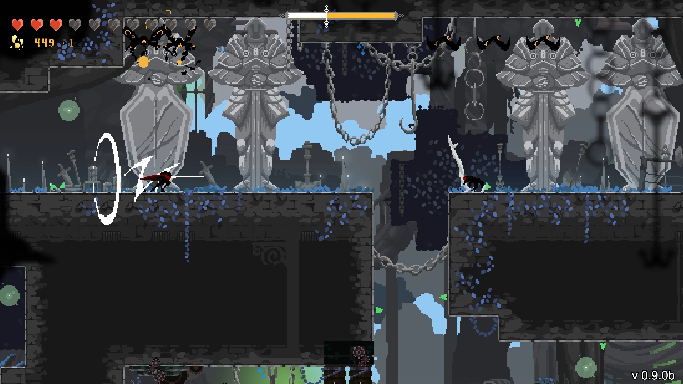
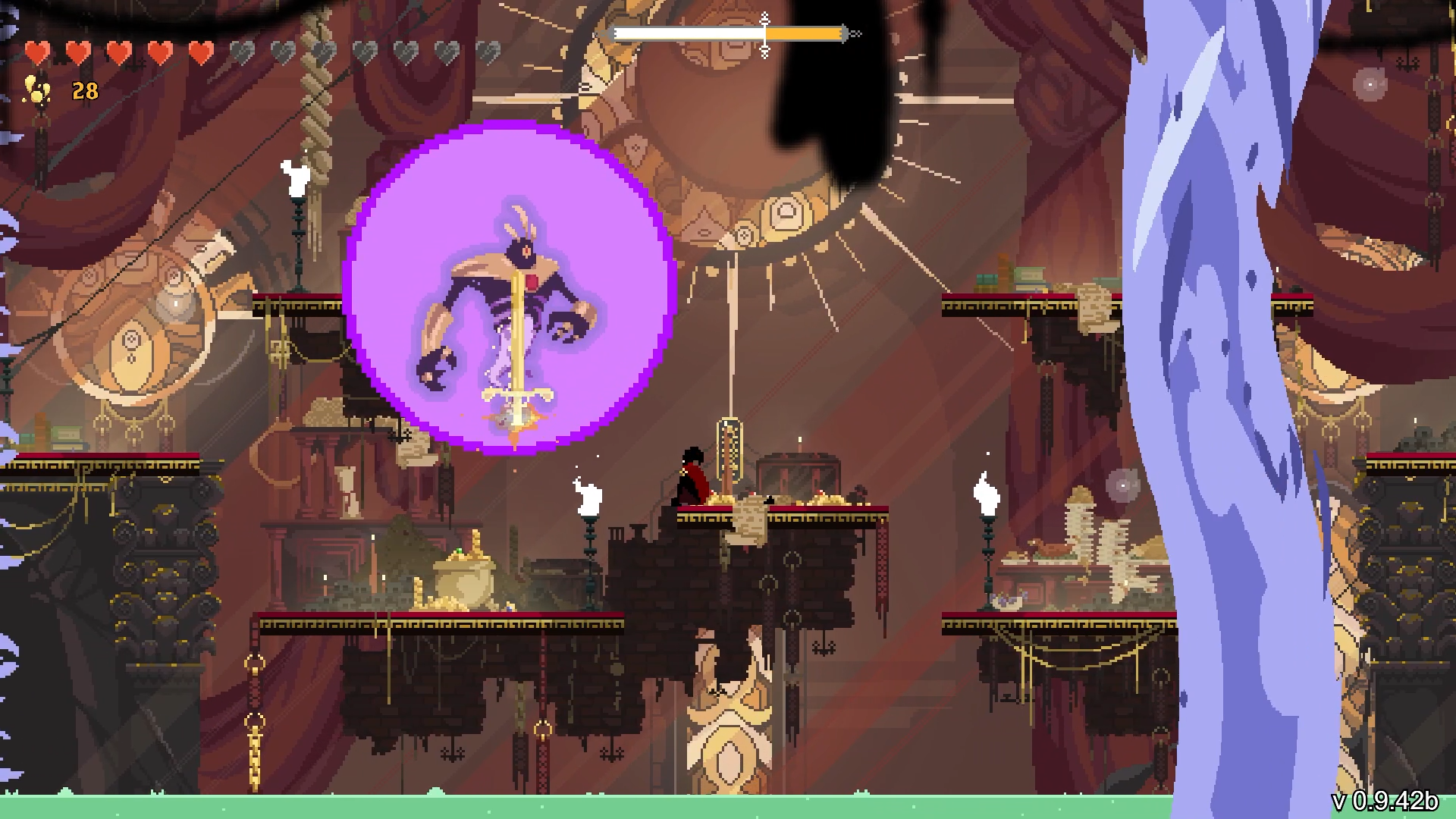
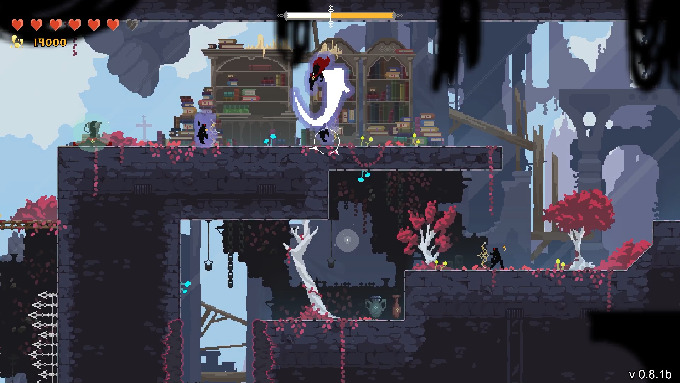
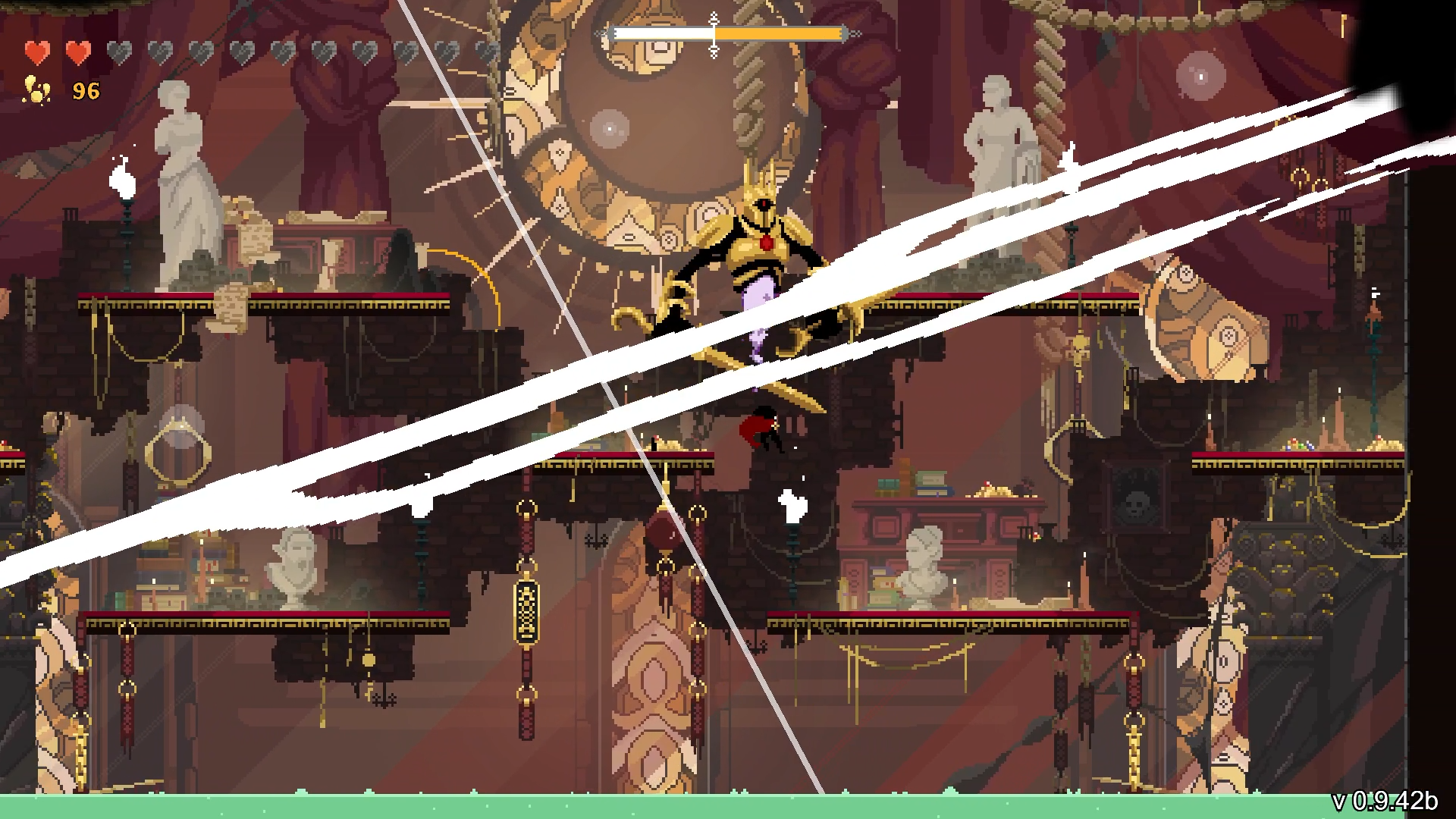
Overall, Noreya: The Gold Project is a sprawling Metroidvania that offers 20-hours of nimble exploration amidst some simple combat and a somewhat fractured plotline. Despite sporting some lovely pixel art visuals, a wonderful musical score and an intriguing premise, there’s a general lack of polish that left me a little wanting. Established Metroidvania fans will find a solid addition to the genre with plenty to enjoy, but in the end Noreya might serve as a reminder that all that glitters is not gold.
Recommendation Score
In the interest of full disclosure, VGamingNews was provided with a copy of the game in order to conduct this review.
Thanks for taking the time to read our review. If you’d like to support us further, please consider buying us a coffee!


